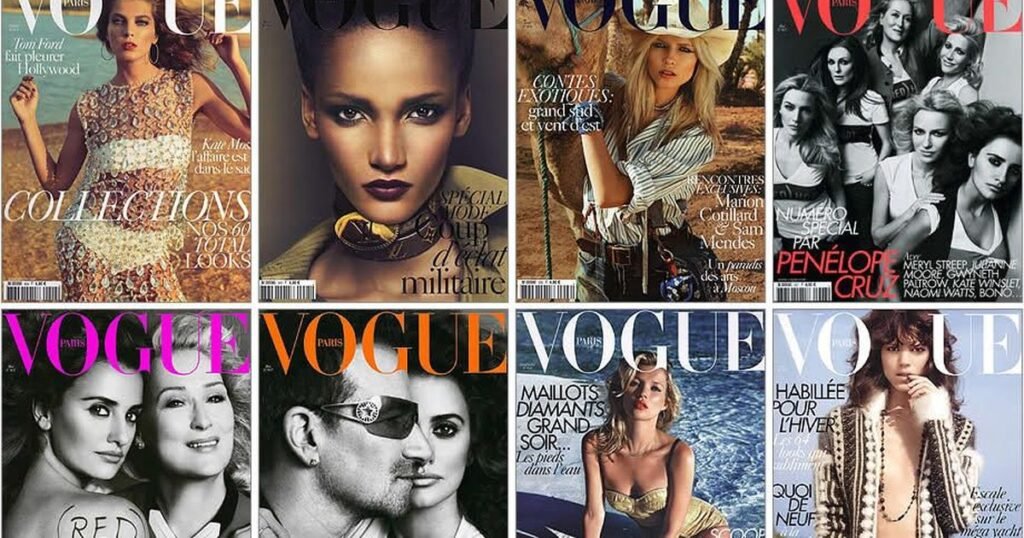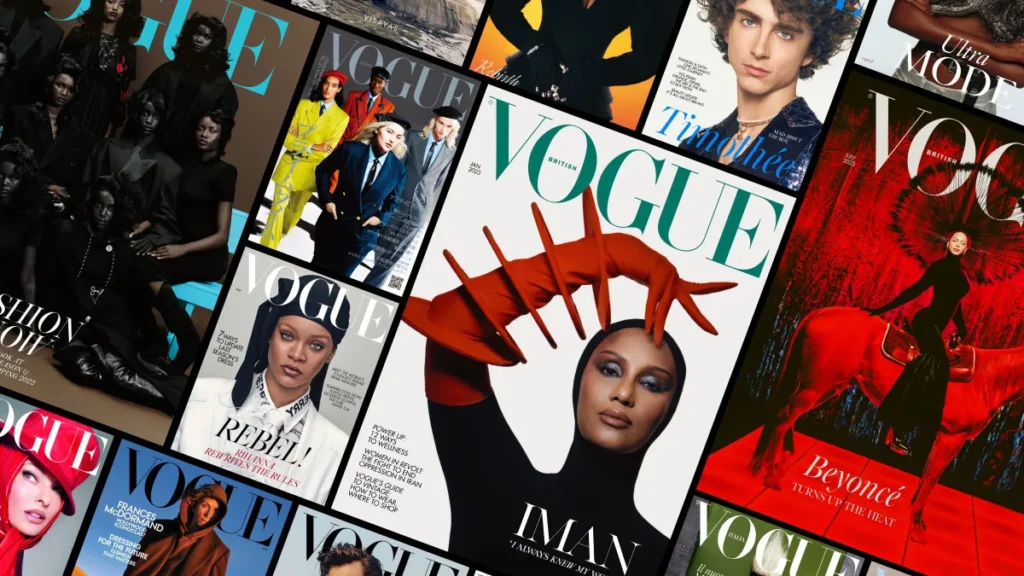Table of Contents
Introduction to the Information Society and its impact on the fashion industry
Information Society in Fashion Magazine Article: Like many fields, the fashion industry is often subject to upheavals; what defines the epoch we live in now is the unprecedented change in the fashion industry brought about by the Information Society. Not the least is the evolution of technology and its influence on genres such as fashion magazines. They are no longer a commodity of print publications; they have become a versatile and fast-developing channel addressing the changes around us.
Pictures now dominate their content, exacerbated by technology, which means that these magazines must keep pace with trends, or it becomes difficult to survive in every nook and kitchen. This paper investigates the intriguing relationship between the information society and the publications dedicated to fashion about the processes from creation to how the publications are perceived today. Buckle up with us as we recreate that tale of the blend between fashion and tech!
The evolution of fashion magazines in the digital age

Undoubtedly, fashion magazines went through a paradigm shift during the digital revolution. Previously, they existed within the luxurious pages of a magazine only, but now find a home on the web and even outdated versions with dynamic content. Creativity is needed to reconstruct literature as reading audiences have invariably shifted to digital platforms. For instance, a reader can consume detailed interactive pieces and art, which take the experience to the next level. Fashion in moving images and GIFs can be promoted in ways that can never be realized in print. Also, the reach has increased tremendously.
Such materials can now be obtained instantly by target markets in any region of the world using different devices. This necessarily means that even fashion information is saturated at the speed of light. It is true that in a matter of seconds, news about fashion magazines will be updated so that readers who follow different publications will not have to wait until the next issue is out. The publication continues, but hot topics and trends are pursued daily on other platforms, keeping the readers active. The growth encompasses technology and a new way of thinking about fashion content consumption nowadays. The future has revolutionized the panorama, which previously accepted slow tendencies.
Incorporating technology in fashion magazine production and distribution

The modern technological development in computers has transformed both the production and circulation of fashion magazines. The use of high-definition cameras, image editing tools, and high-quality printing processes has taken visual communication to new levels. Captivating first pages impress designers and urge gold embossed color schemes to lift most eyes from the pages. Content sharing is also changing due to moving to digital spaces.
Volumes of fashion magazines can now quickly bring out web versions that can reach people worldwide within no time. With this change, fashion magazines can publish information about current trends and events at any time. In addition, AR is gaining ground even in published works. As said, a reader can scan a particular page with her phone and open elements or standard videos. The synergy of materials turns the reader deep into fashion stories via various means of communication. In addition to this, subscription services take advantage of the technology by offering related books to the readers. This also improves reader interest and helps reduce distribution barriers in almost every corner of the world.
Utilizing social media and influencers to reach a wider audience
Fashion communication has taken a new twist today, aided by social networks. Social networks are vital in developing and metamorphosing tendencies; Instagram, TikTok, and Pinterest, among other such picture or video-centered social networks, have contributed to this significantly. They are crucial intermediaries between brands and consumers. Every interest in this and every form of interaction with the followers creates performance, which eventually increases the likelihood of trying new things or styles. One picture or a one-liner can travel through different age groups.
To maximize this opportunity, fashion magazines have been working with influencers and offering this content only for specific audiences. Such aspects often mix reporting with personal creative approaches to the subject that give new insights into the way of looking at fashion. In addition, the feedback also helps magazines as they ask about the audience’s likes at the moment and not later. This is very important in planning and drafting other content whose impact is likely to be high. Fashion magazines can go beyond the conventional limitations that exist as a practice. They cater to specialized audiences that print editions would not reach and ensure effective hearsay is targeted in the writing society.
Embracing diversity and inclusivity in fashion magazines
Fashion publications are starting to catch up with the complex identities of today’s society. Tolerance is more than putting females with different skin colors on a cover. Great representation includes different body shapes, ages, and ethnicities. What readers are reportedly looking for is realness and representation.
Their image in the magazine creates a deeper bond than the articles. This transition makes brands challenge their state of mind about the definition of beauty and fashion. Diversity is not a fad but the only way forward in this competitive landscape. Yes, and other things like targeting magazines that celebrate ‘diversity/cultural’ voices tend to have a wide readership due to making people feel appreciated.
Furthermore, this emphasis on diversity can lead to progress in the industry. When different people’s ideas come together, new ways of doing things emerge, transforming fashion as the whole fraternity knows it. By advocating these principles, fashion magazines also help define society while promoting acceptance amongst readers.
Challenges and opportunities of the Information Society for fashion magazines
On the one hand, fashion magazines are in the information society by the sword on both sides. This means geography, at least in the present, or especially how fast one is going in digital evolution. Dominant print modes give way to web versions, which bring information instantly.
Nevertheless, coming up with problems is a benefit as well. There has been a geographical reach that magazines have never imagined. Social media helps promote more tailoring spectacles that consumers/ readers want. This also means the publishers can use data to determine readers’ preferences in real-time. This result encourages experiences that are up to standard for most of the audience. There is, however, the need to ensure that the quality is preserved along the information overload.
Owing to the rapid changes in trends, magazines are always finding themselves on a tightrope between timely and thought-provoking execution of their stories. These may make the processes cumbersome; creative risk-taking and change are some of the challenges, but those who will adapt to change will solve the question of relevance in the new fashion quotation systems of journalism.
Conclusion: The future of fashion magazines in the Information Society
The future of fashion magazines in the Information Society looks excellent and is brimming with opportunities. With the advancement of technology, people can access more fashion content than they used to. Digital websites are no longer supporting tools; they now serve as the basis of trend diffusion and diffusion. In pure practice, fashion magazines become drivers of such conversations, which find support from the business-oriented masses. This change encourages a shift within brands towards honesty and openness along with their values.
Seasoned professionals instead of fashion enthusiasts are the readers as magazines have stories behind them rather than out fables. Mixing editorial and columnist practices brings new insight into published articles. It expands the content, where old and young professionals construct the story, focusing on style, culture, and hair. As we progress in this hype, such newer technologies as AR or AI can enhance the level of the reader’s involvement even more. You can visualize turning the pages of a digital magazine where you can click on things you wish to buy from their pictures or view more images and text that may not have been a part of the magazine.
Further, considering an inclusive strategy means more and more people will be able to identify with these publications. Diversity fuels innovation and reflects changes in society, which is pivotal given the culture that we live in today, which is saturated with information. Fashion magazines celebrate at an innovative yet traditional crossroad— an enticing prospect yielding captivating stories for anybody’s palate. This is not simply about adjusting to the evolving world but about emerging successfully in such a world, under tilted capitalism or within the network society.
FAQs:
What is the information society in fashion magazine article about?
The information society in fashion magazine article explores the impact of technology and digitalization on fashion magazines, highlighting how they adapt to trends and audience engagement.
What role does technology play in the information society in fashion magazine article?
Technology in the information society allows fashion magazines to utilize high-definition visuals, AR, and instant updates, making them more interactive and engaging.
How do social media influence the information society in fashion magazine article?
Social media serves as a crucial platform in the information society, enabling fashion magazines to reach wider audiences and collaborate with influencers for targeted content.
Why is diversity important in the information society in fashion magazine article?
Diversity in the information society helps fashion magazines reflect real societal identities, fostering representation and inclusivity that resonate with readers.
What opportunities arise from the information society in fashion magazine article?
The information society offers opportunities for fashion magazines to reach global audiences, leverage data for personalization, and innovate content delivery.

